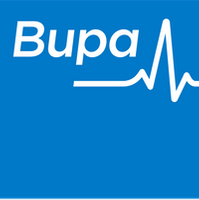How to address disability at work – and make inclusion a reality
There are various ways that employers can make the workplace a more welcoming and inclusive environment for people have a disability.
Life-changing examples could include:
- Ramps for wheelchair users
- Hearing loops for colleagues who use hearing aids
- Closed-captioning of events and meetings
There are no simple off-the-shelf solutions. The first step is always to start a conversation. Begin by considering what would improve the working environment for disabled employees. Also consider your organisation’s processes and policies.
Not an afterthought
Mark Hodgkinson, Chief Executive of Scope says: “Inclusion should be a given and seen as something for everyone, not an afterthought.
“Embedding inclusion in your organisation’s ethos avoids the need to retrofit adjustments into the workplace and helps build a healthier and happier workplace and culture.”
Providing tailored support for people with a disability can be complex and challenging. Disability affects people of all sexes, ages and ethnicities. It takes many different forms, has multiple causes and may change over a person’s lifetime.
It can be visible or less visible, may require a wide range of care and support, and it has a broad spectrum of impacts.
The Equality Act 2010 defines disability as someone having a physical or mental impairment that has a ‘substantial’ and ‘long-term’ negative effect on their ability to do normal daily activities.
Reasonable adjustments
The Act requires employers to make ‘reasonable adjustments’ to prevent anyone with a disability being disadvantaged.
It is illegal to discriminate against a disabled person on a range of employment issues. But there are benefits to disability inclusion, particularly when it comes to recruiting, developing and retaining talent.
The latest Office of National Statistics (ONS) data shows that:
- One in four working-age adults (16-64 years) in the UK is disabled
- Only just over half of working-age disabled adults are in work, compared with over four in five people who are not disabled
Dr Naveen Puri, Associate Clinical Director at Bupa, says: “We can all take more tangible actions to tackle the disability talent gap.
“Real disability inclusion is not about a single person being given a role, it’s about embedding inclusion in every aspect of your business.”
Sarah Phillimore, a family law barrister who lives with disability following the childhood amputation of her left leg, says: “Practical measures to improve access and inclusion are essential.
“We need to change the workplace environment to make it less hostile to disabled people. This takes genuine commitment and practical action.”
Apart from adjustments already mentioned, other areas to consider include:
- Two-way mentoring
- Accessibility of your website
- Facilities for safe storage of medicines, equipment and other aids
- Providing noise cancelling headphones
- Adjustments to uniforms
- The choice of fonts and colours in business presentations
Daily indignities
Phillimore says: “The inequality and daily indignities disabled people face can’t be fixed by changing a corporate lanyard or adding a logo to your website. It needs practical support such as ramps and lifts that always work, special aids and equipment and adaptations to the working environment.”
A YouGov poll of 1,000 Britons living with disability reveals the current disconnection between what should happen, and what is happening.
Nearly three in five disabled people surveyed reported encountering at least one problem when looking for work. This figure was even higher among those with learning, social or memory disabilities.
Workplace challenges
The most common challenges were:
- Finding a workplace suitable for their needs (33%)
- Insufficient opportunities to work from home (30%)
- A workplace culture that was not understanding of people with disabilities (24%)
- A lack of options for flexible working (24%)
The YouGov data underlines the importance of employers taking a proactive approach to making the workplace more inclusive.
Fewer than half of the disabled people in work had asked their employer to make reasonable adjustments. And men are far less likely to ask for support than women.
When they do, more than nine in 10 disabled employees who ask for reasonable adjustments to be made report that all (60%) or some (33%) of their requests are actioned.
Yet research by the Business Disability Forum (BDF), found:
- More than one-third of employees had not asked for adjustments because they feared their manager would treat them differently.
- A quarter waited for more than a year for adjustments to be made.
Support makes a difference
Despite these barriers, the BDF research shows the right support can make a big difference for both workers and organisations.
- Four in five employees said adjustments increased their productivity and helped them stay in their job.
- Three in five enjoyed their jobs more as a result of these accommodations.
The demand for this sort of support is increasing. The proportion of the UK population living with a disability has risen by three percentage points in a decade.
Data from the Institute of Fiscal Studies shows this is being driven by an increased prevalence of mental health conditions. Psychiatric conditions account for four-fifths of the rise in claims for disability benefits over the past 20 years.
Help disabled employees thrive in the workplace with our manager’s guide.
Learn more about disability inclusion in the workplace with our video.
Supplied by REBA Associate Member, Bupa
Bupa's purpose is helping people live longer, healthier, happier lives and making a better world.








